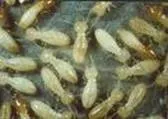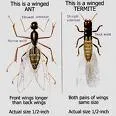WOOD DESTROYING INSECT INFESTATION INSPECTION



Termites are a major problem in North America. They can cause significant damage to the structure of your home or office building. The first type is the one that has already been infested by termites and needs to be inspected for any signs of them. The second type is the one that has not yet been infested by termites but will be soon if it isn't taken care of properly. The insect inspection process starts with a visual inspection of the property. The inspector will look for any signs of termites, carpenter ants, carpenter bees, old house borers, and or powder post beetles. They will also look for any signs of damage to the wood that may have been caused by these pests.
Termites are a natural part of the ecosystem and they have been around for millions of years. They are not harmful to humans, but they can cause significant damage to homes and buildings. The most common type of termite found in the United States is the subterranean termite, which lives underground and builds mud tubes to travel from one area to another. Termites are social insects that live in colonies. Termites are social insects that live in colonies. They feed on wood and other cellulose-based materials. Termite colony members are dispersed throughout the soil and can extend underground tunnels tens to hundreds of feet to reach food sources.

The best solution is to form a barrier between the house and the soil, and periodic inspection of the part that is normally not seen frequently. We also check for conditions advantageous to an infestation in the future such as ground-to-wood contact, moisture levels, and wood decay. Insect infestation is one of the most common causes of wood destroying insect (WDI) damage.
Carpenter Ants:



Carpenter ants are not wood-eating ants. They excavate galleries in wood to rear their young ants and carry aphids to plants, placing them on the leaves. Carpenter Ants feed on both plant and animal origins such as plant juices, fresh fruits, insects’ meats, syrup, honey, jelly, and other sweets.
Carpenter ants are not usually found in homes, but they can be attracted to homes that have a lot of moisture or rotting wood. They also like to eat termites, which is why they generally do not co-exist with them in a home

Dry Rots
Microorganisms like fungus are a significant source of wood rot. These microbes are present in the environment and attack the exposed wood with the help of their enzymes.
We should always be aware of our surroundings, as fungus can live even in small amounts of dust on a surface. Fungus is usually found in wet and damp areas, but it's not always easy to spot. If any WDII is found, the seller would usually be responsible for treating it before closing. If the home has been treated in the past, the WDII treatment must continue to prevent the new growth of fungus and to stop any spores from spreading throughout the home.
Termite Treatment Cost
The cost of new termite treatment depends upon the size of the home, the area to be treated, and the difficulty in doing so. The estimates can be $ 800.00 - $ 2,500.00.